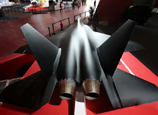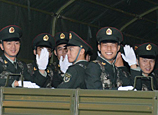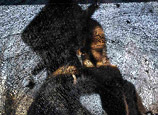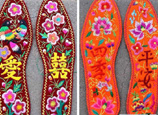
While for many, Chinese painting means the abstract and intangible images rendered by floating lines of ink, realism has been a very important tradition in the long history of Chinese art. Claborate-style painting is an important genre of Chinese art, and strives to portray subjects as lifelike through detailed strokes and complicated dyeing skills.
The painting tradition started in the Tang Dynasty (AD 618-907) and flourished in Song Dynasty (960-1279). At the start of the Ming Dynasty (1368-1644) when Western realistic painting entered China, claborate-style painting incorporated many of its skills and advanced a to higher level in terms of modeling.
For the first time in the history of Chinese auctions, Poly Auction has held an exhibition highlighting 50 works by modern and contemporary claborate-style painters.
The works demonstrate the evolution Chinese claborate-style painting has gone through over the past century, said Jiang Ji'an, renowned claborate-style artist who has several of his avant-garde paintings displayed at the exhibition.
It's basically a reflection of how Western realistic painting has had role in the making of China's "new claborate-styles", Jiang added. As an example he cited the works of painters who rose to fame after China's reform and opening-up, describing them as being a lot more experimental in terms of subjects, materials and painting techniques than those painters who grew up during the "cultural revolution" (1966-76).
"You can hardly say the change itself is good or bad. It's a natural reflection of different times. But no matter how it changes, you can see it's still different from pure Western realistic paintings like oil painting. It has inherited some of the core values of Chinese claborate-style painting," he said.
The exhibition will run until Nov 20. Another exhibition, closely followed by an auction, will open in the spring of 2013.














 Landmark building should respect the public's feeling
Landmark building should respect the public's feeling


![]()
